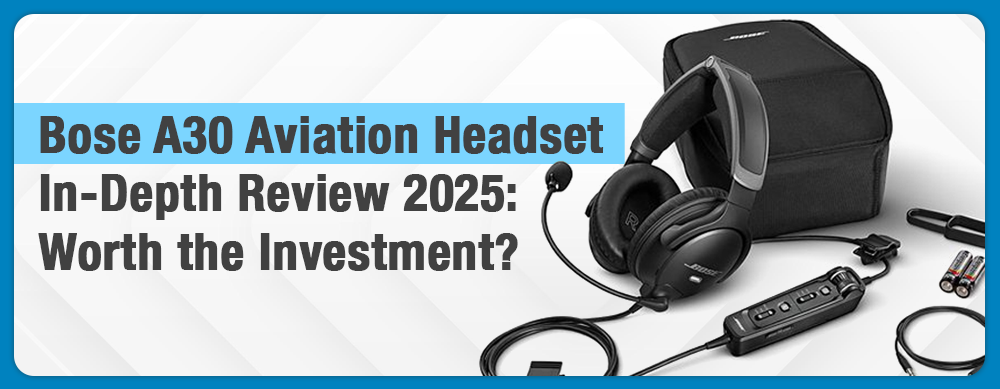Los motores de aviación dependen del aceite como piedra angular de su rendimiento y longevidad. El aceite ayuda a lubricar y es el elemento vital de los motores de las aeronaves.
Mantienen una refrigeración adecuada y prolongan la vida útil de los motores. Como piloto o técnico en aviación, deberá comprender el propósito del aceite de motor en la aviación y aprender cómo ayuda a los pilotos y mecánicos.
El aceite para motores de aeronaves es un elemento muy potente. Amortigua las piezas móviles, controla el calor, sella las cámaras de combustión, limpia los contaminantes y protege contra la corrosión. Estas seis funciones son fundamentales para mantener el rendimiento óptimo de los motores.
Veamos los detalles detrás del propósito del aceite de motor.
RESUMEN
-
El aceite de motor amortigua y lubrica los componentes vitales del motor para evitar la fricción y el desgaste.
-
Regula la temperatura del aceite para controlar el calor y proteger contra daños térmicos.
-
Los sellos de aceite cubren las cámaras de combustión, optimizando la eficiencia del motor y evitando fugas de gases.
-
Atrapa residuos y limpia el motor, evitando que los contaminantes causen daños.

1. Lubricación: la función principal
La función principal del aceite de aviación es lubricar las piezas móviles. Los motores de los aviones, especialmente los refrigerados por aire, están llenos de componentes como cigüeñales y bielas que funcionan bajo una tensión intensa.
Sin lubricación, la fricción provocaría un desgaste excesivo, sobrecalentamiento y, en última instancia, una avería. El aceite de motor forma una película fina y resbaladiza entre estas piezas metálicas, lo que les permite moverse con suavidad sin rozarse entre sí.
Este efecto de amortiguación es particularmente vital durante eventos de carga de impacto, como la carrera de potencia del pistón.
Más allá de la lubricación, el aceite protege contra el contacto de metal con metal, garantizando que incluso bajo cargas pesadas, las partes móviles del motor permanezcan funcionales y eficientes.

2. Refrigeración: gestión del calor
El aceite de motor de aeronave se utiliza con el fin de regular la temperatura del aceite, especialmente en motores de aeronaves refrigerados por aire.
Los aceites de aviación absorben el calor de los pistones, las paredes de los cilindros y otros componentes, manteniendo una buena temperatura de funcionamiento. Al transferir el calor al enfriador de aceite, el sistema se asegura de que los componentes estén protegidos contra daños térmicos. Esto ayuda a que el motor dure más.
Se estima que los sistemas de aceite del motor pueden representar hasta el 50 % de la refrigeración total del motor. El combustible para aviones se quema a temperaturas extremas, pero gracias a las propiedades refrigerantes del aceite, se puede confiar en los motores incluso en condiciones intensas.

3. Sellado: prevención de fugas de gases de combustión
Otra acción valiosa que puede realizar el aceite es que es importante para el motor de su avión, ya que sella la cámara de combustión. Forma una barrera entre el pistón y la pared del cilindro, lo que realmente ayuda a evitar que los gases de combustión se escapen. El sello garantiza que el motor funcione en óptimas condiciones, sin pérdida de potencia ni rendimiento.
Si el aceite no tuviera esta función de sellado, se experimentaría una menor eficiencia del motor, un mayor desgaste y mayores costos de mantenimiento.
Para los motores de pistón de las aeronaves, esta función es una parte muy importante para mantener un rendimiento óptimo de la aeronave.

4. Limpieza: atrapando contaminantes
¿Has notado alguna vez que el aceite de los aviones se vuelve oscuro y sucio después de un tiempo? Eso se debe a que está cumpliendo su función de limpiar el motor.
Los aceites de aviación también atrapan contaminantes como hollín, partículas metálicas y residuos, que luego transportan hasta el filtro de aceite, donde se eliminan. Los aditivos del aceite, como los dispersantes, mantienen estas partículas suspendidas para que no se depositen y provoquen desgaste abrasivo en el futuro.
El uso de aceite para limpiar el motor reduce el riesgo de daños a largo plazo. Ya sea aceite mineral, aceite sintético o aceite dispersante sin cenizas, esta propiedad de limpieza está destinada a mantener el motor de su aeronave funcionando de manera saludable.

5. Prevención del óxido: protección contra la corrosión
El aceite para motores de avión deja una fina capa protectora sobre las piezas del motor. Esto resulta muy útil porque actúa protegiendo estas piezas importantes del óxido y la corrosión.
Esta protección es más importante cuando el motor no está en uso. Sin embargo, cabe señalar que este revestimiento no dura indefinidamente. Los períodos prolongados de inactividad pueden provocar corrosión si la película de aceite termina por descomponerse.
Para evitar este problema, es fundamental hacer funcionar el motor con regularidad y realizar los cambios de aceite a tiempo. Si desea prolongar la vida útil del motor de su avión, deberá realizar un uso y un mantenimiento regulares. Piense en una casa que está deshabitada: todo lo que no se usa y se cuida se acaba estropeando.

6. Cómo prolongar la vida útil del motor: retrasar las revisiones
El aceite de aeronave tiene las funciones de lubricación, enfriamiento, limpieza y prevención de la oxidación.
Los cambios de aceite y el mantenimiento periódicos garantizan que el motor funcione de manera eficiente, lo que reduce la frecuencia y el costo de las revisiones. En pocas palabras, un aceite bien mantenido es una inversión en la longevidad y confiabilidad de su aeronave.
Señales de contaminación del aceite
Ruido inusual del motor
Esté atento a cualquier ruido inesperado proveniente del motor. Estos ruidos pueden indicar que el aceite no proporciona suficiente lubricación. Esto puede deberse a contaminación o degradación que está provocando un aumento de la fricción entre las piezas del motor de su avión.
Fugas de petróleo
Revise cuidadosamente si hay indicios de una fuga de aceite en el motor o alrededor de él. Las fugas indican posibles problemas con el sistema de aceite y deben solucionarse rápidamente para evitar más daños o problemas operativos en su aeronave.
Aceite oscuro o sucio
Durante la verificación previa, preste mucha atención al color del aceite en la varilla medidora. El aceite que se ve inusualmente oscuro o sucio puede estar cargado de contaminantes como residuos o virutas de metal. Si ve que esto sucede, es una clara indicación de que es necesario reemplazar el aceite del motor de pistón.
Factores del aceite del motor de la aeronave
Paquete de aditivos
Los aceites para aeronaves modernos suelen incluir aditivos especiales diseñados para aumentar el rendimiento y proteger el motor. Busque aceites con componentes como agentes antidesgaste, detergentes e inhibidores de corrosión. Todos estos maravillosos aditivos trabajan juntos para mantener la limpieza del motor y proteger los componentes durante su funcionamiento.
Viscosidad
Es conveniente que conozca y seleccione un aceite con la viscosidad adecuada. La viscosidad del aceite debe coincidir con las especificaciones del motor de su avión. El uso de aceite con la viscosidad incorrecta puede comprometer la lubricación, acelerar el desgaste de las piezas o provocar posibles problemas en el motor. Definitivamente, querrá evitar ese resultado.
Otras consideraciones
Analice la estabilidad térmica del aceite, la resistencia a la oxidación y la compatibilidad con los materiales de su motor. Infórmese sobre los distintos productos y marcas, encuentre uno que se ajuste a estos factores y verá un mejor rendimiento y una prolongación de la vida útil del motor de su avión.

Preguntas frecuentes
-
¿Con qué frecuencia se debe cambiar el aceite del motor de un avión?
Normalmente, cada 25 a 50 horas de vuelo, dependiendo del motor y las condiciones de uso. -
¿Qué tipos de aceite se utilizan en los motores de aviación?
El aceite mineral, el aceite dispersante sin cenizas (AD) y el aceite sintético son los tres tipos principales. -
¿Por qué el aceite se oscurece con el tiempo?
El aceite atrapa contaminantes como hollín y partículas metálicas, que oscurecen el aceite mientras hace su trabajo. -
¿Puede un motor de avión funcionar sin aceite?
No, hacer funcionar un motor sin aceite provocará una falla catastrófica debido a la fricción y al sobrecalentamiento. -
¿Qué sucede si se utiliza un aceite con una viscosidad incorrecta?
Puede provocar una lubricación deficiente, un mayor desgaste y posibles daños al motor. -
¿El aceite ayuda a enfriar el motor?
Sí, el aceite absorbe y transfiere calor, lo que representa hasta el 50% del enfriamiento del motor.
Llevar
El aceite de motor es esencial para que los motores de aviación funcionen de manera confiable. Sus funciones multitarea, que incluyen la lubricación y la refrigeración, son valiosas para la seguridad de las operaciones de los motores. El mantenimiento y los cambios de aceite regulares no solo prolongan la vida útil del motor, sino que también evitan costosas reparaciones futuras.
Los pilotos y mecánicos siempre deben priorizar el tipo y la viscosidad adecuados del aceite, ya sea aceite mineral, aceite sintético o dispersante sin cenizas. Tómese el tiempo para comprender el impacto del aceite en la salud de su motor y verá un rendimiento óptimo en cada vuelo.
¿Estás listo para profundizar más? ¡Consulta nuestras otras guías diseñadas para ayudarte a volar de manera más inteligente!
¿Interesado en sistemas de combustible?
¡Nuestras guías están diseñadas para ayudar!
-
Significado de Bingo Fuel (por qué no se utiliza el término en la aviación civil)
-
Cessna 172 vs 182: comparación de rendimiento, costo y características
¿Le resultó útil este artículo?
¿Crees que nos hemos olvidado de alguna pregunta importante de la entrevista? ¡Cuéntanoslo en los comentarios a continuación!









